The Role of Technology in Global Governance in 2024
In 2024, the world is seeing a big shift to technology in global governance. Countries and companies are putting a lot of money into Artificial Intelligence (AI)1. This tech change is changing how countries work together and shows we need a better global system for today’s digital world.
The United Nations’ Pact for the Future, adopted in September 2024, is a big step forward. The initiative includes a Digital Compact and a Declaration on Future Generations, aiming to align international cooperation with the needs of today and tomorrow while addressing key issues such as peace, sustainable development, climate change, and human rights.
Key Takeaways – Technology in Global Governance
- The role of technology, especially AI, is quickly changing global governance and international cooperation.
- The UN’s Pact for the Future, adopted in 2024, is a key agreement to update global governance for the digital age.
- The Pact deals with many important issues, showing we need a more inclusive and representative global system.
- Technological advancements, like AI, bring both chances and risks that need careful handling and rules.
- It’s a big challenge to make sure the benefits of new technologies are shared fairly around the world.
1. Understanding Global Governance Evolution in the Digital Age
The world has changed a lot in recent years, with technology playing a big role in how we govern and make policies. It’s important to know how technology has shaped governance, where we are now with digital policies, and who is leading the way in modern governance2.
Historical Development – Technology in Global Governance
Technology has greatly influenced global governance. The rise of AI in a few big companies in the US, China, and Europe has been a key factor2. UNESCO and the Council of Europe have made big steps in AI ethics and law, showing how technology is changing how we work together and make decisions2.
Current State of Digital Transformation in Global Policy
The European Union has led the way in digital policy, starting talks on AI laws in 20212. AI is now seen as key to global strategy, economy, and safety, making international work together more important2. AI’s global impact means we need rules that work across borders, leading to a complex system of rules and no single leader2.
Key Stakeholders in Modern Governance
Many groups are shaping global governance today. Private companies, governments, NGOs, and groups working together are all playing a part3. The growth of AI globally means we need to work together to make rules and solve problems2.
| Stakeholder Type | Examples |
|---|---|
| Private-sector led initiatives | Initiatives led by technology companies like Microsoft and Google |
| Government-led initiatives | Regulatory frameworks and policies developed by national governments, such as the EU’s AI Act |
| Civil society and NGO-led initiatives | Advocacy and norm-setting efforts by organizations like the United Nations and Global Partners Digital |
| Multi-stakeholder initiatives | Collaborative efforts involving various stakeholders, including the UN High-Level Advisory Body on AI |
As we move forward in the digital age, it’s clear we need to work together more3. The COVID-19 pandemic has made this need even more urgent, showing how fast we must adapt to new technologies in our global work3.
2. Technology in Global Governance, Digital IDs Global Policy, AI in Policy Making
The world is changing fast, thanks to technology. Digital IDs, AI in policy making, and algorithmic governance are leading this change. They are changing how countries and global groups work together to solve big problems4.
AI governance is a big deal now. It involves setting standards, making rules, and working together worldwide. The UN’s Global Digital Compact is a big step towards global digital cooperation and AI governance5.
More and more people are calling for global AI governance. The UN and G20 leaders are working on it. They want to make sure AI benefits everyone fairly5.
| Digital IDs Global Policy | AI in Policy Making | Algorithmic Governance |
|---|---|---|
|
|
|
As we face the good and bad of these technologies, working together is key. We need to make sure everyone gets a fair share of the benefits. This way, we can have a fair and effective system56.
3. The UN’s Digital Compact: Reshaping International Cooperation
The Global Digital Compact is a key initiative by the United Nations. It was launched in 2024 at the 79th UN General Assembly. This non-binding agreement aims to create a fair, inclusive, and secure digital world7.
Implementation of Global Digital Standards
The Compact focuses on important areas like internet access, digital inclusion, and human rights7. It acts as a guide for countries, tech companies, and civil society. They work together to set and follow global digital standards7.
Cross-Border Data Governance Frameworks
The Compact aims to create rules for managing data across borders. With data traffic expected to grow by over 400% by 2026, it’s essential8. It wants to ensure data is handled responsibly and fairly.
Cybersecurity Collaboration Initiatives
The Compact also focuses on cybersecurity. It recognizes the need to protect our digital world from threats8. It aims to help countries and businesses develop strong cybersecurity policies and data privacy regulations.
The UN’s Digital Compact is a big step towards better tech cooperation worldwide. It brings together different groups to work on global digital standards. This effort aims to close the digital gap and help communities globally7.
| Metric | Value |
|---|---|
| Internet users in 2002 | 1 billion |
| Internet users today | 5.3 billion |
| Internet users in Europe | 89% |
| Internet users in low-income countries (women) | 21% |
“The Global Digital Compact represents a groundbreaking opportunity to establish internationally agreed principles for digital governance with a focus on human rights.”
– Estelle Masse, Senior Policy Analyst at Access Now
4. Artificial Intelligence’s Impact on International Decision-Making
The digital revolution is changing how we govern globally, and AI is at the forefront9. It could boost global GDP by $15.7 trillion, or 14%, by 20309. But, using AI in policy-making brings its own set of challenges, like ethical and practical issues.
AI is making waves in financial markets9. In the U.S., financial AI investments tripled to $12.2 billion between 2013 and 20149. AI systems are now making many financial decisions, raising questions about transparency and accountability.
AI’s influence goes beyond finance9. It could boost China’s GDP by 0.8 to 1.4 percentage points each year9. China aims to invest $150 billion in AI by 2030 to lead the world in AI.
Impacts of AI
But, using AI in policy-making raises ethical concerns10. AI could change 40% of jobs worldwide, with 60% in advanced economies and 26% in low-income countries10. Policymakers must ensure AI benefits everyone and protects citizens’ rights.
As we face AI’s challenges and opportunities, global cooperation and ethical AI frameworks are key11. Big tech companies, like those in AI, are growing in influence, affecting local communities and economies11. Working together and setting strong governance can help us use AI for the good of all.

“The prospect of AI becoming a geopolitical actor raises concerns about the motives and objectives of AI different from those of governments and companies, highlighting the challenges of humans understanding AI and managing relationships with AI in the future.”11
| Metric | Value |
|---|---|
| Percentage of senior business leaders familiar with AI in the U.S. (2017) | 17%9 |
| Potential increase in global GDP due to AI by 2030 | 14%9 |
| Increase in financial AI investments in the U.S. (2013-2014) | Tripled to $12.2 billion9 |
| Potential annual GDP growth impact of AI-led automation in China | 0.8 to 1.4 percentage points9 |
| China’s AI investment goal by 2030 | $150 billion9 |
| Percentage of jobs globally that could be affected by AI | 40%10 |
| Percentage of jobs in advanced economies that could be affected by AI | 60%10 |
| Percentage of jobs in emerging economies that could be affected by AI | 40%10 |
| Percentage of jobs in low-income countries that could be affected by AI | 26%10 |
AI’s impact on international decision-making is significant. Policymakers must understand AI’s benefits and challenges. This way, they can use AI for the betterment of society while protecting citizens’ rights.
5. Blockchain Technology in Global Governance Transparency
Blockchain technology is changing how we see governance around the world. It’s a new way to make international agreements clearer and more fair. It also helps in making sure everyone is accountable in public services12.
Smart Contracts for International Agreements
Blockchain is great for making smart contracts for international deals. These digital agreements work on their own, without needing middlemen. This cuts down on mistakes and makes things more trustworthy12.
This tech can change how we make and keep international treaties. It makes sure everything is open and honest from start to finish.
Decentralized Governance Systems
Blockchain also helps create systems where many people make decisions together. This is different from having one person in charge13. It makes it easier for more people to have a say in how things are run.
This way, governments can work better and faster. Blockchain’s clear and unchangeable records help build trust. It also helps cut down on corruption and makes public services better.
As we face big challenges in governance, blockchain can help. It supports the United Nations’ goals for more openness and cooperation13. By using this tech, we can make governments more fair and effective for everyone.
| Blockchain Applications in Governance | Key Benefits |
|---|---|
| Smart Contracts for International Agreements | – Automatic enforcement of contract terms – Reduced risk of human error or manipulation – Increased transparency and trust in cross-border treaties |
| Decentralized Governance Systems | – Distributed decision-making power – Fostering democratic participation – Empowering local communities – Improving efficiency and responsiveness of government operations |
“Blockchain technology can revolutionize the way governments and international organizations negotiate and implement cross-border treaties, ensuring transparency and integrity throughout the process.”
Blockchain in governance is very promising. It can make things more open, fair, and cooperative. As we move into the digital age, using these new tools can help us create better governments for everyone1213.
6. E-Governance Implementation Across Nations
In recent years, public services have seen a big change thanks to digital transformation. Countries all over the world are using e-governance to make things better. This includes making services more efficient, transparent, and engaging for citizens14.
The UN’s E-Government Development Index (EGDI) shows a positive trend. Between 2020 and 2022, 5.3% more countries reached the top EGDI values (0.75 to 1.00). Now, 60 nations are at this level14. This shows a strong global effort to use technology for better governance.
The UN’s Digital Compact is playing a big role in this change15. It focuses on working together to make digital services available to everyone. This partnership helps countries deal with digital gaps and ensures everyone benefits from e-governance.
Technology is also changing how governments make decisions16. AI is being used in policy-making and service delivery. It promises better efficiency, cost savings, and results16. But, it’s important to use these technologies responsibly and protect human rights.
As e-governance grows, countries face new challenges. They must make sure technology benefits everyone equally. They also need to tackle issues like data privacy and cybersecurity15. By working together and using digital tools, governments can improve public services and empower citizens.
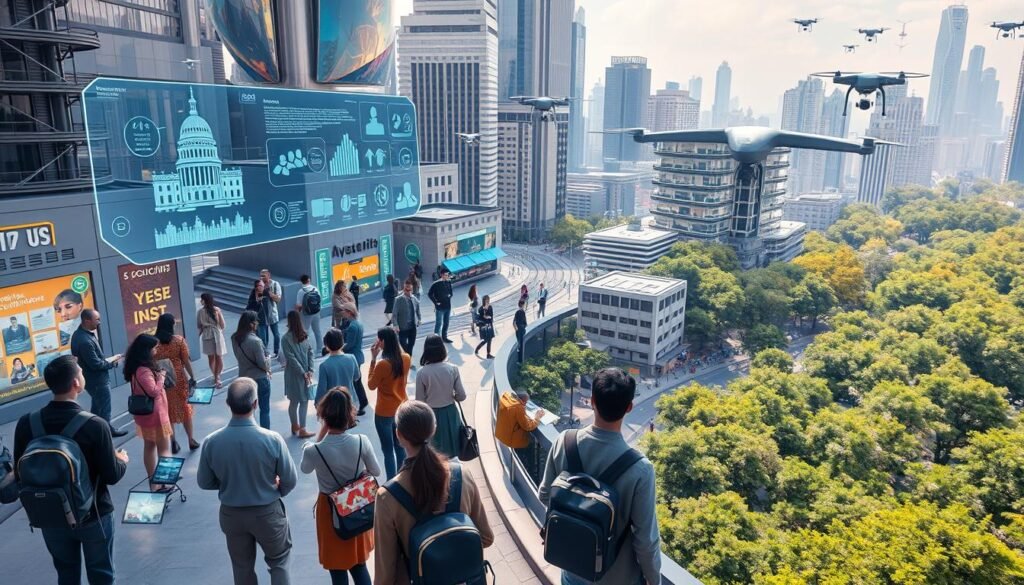
“E-governance is not just about technology; it’s about transforming the way governments interact with citizens and deliver public services. It’s a fundamental shift in the way we approach governance in the digital age.”
7. Data-Driven Policymaking and Global Standards
In today’s digital world, using data to make policies is key to good global leadership17. The United Nations’ Pact for the Future highlights the importance of open data17. It calls for agreements on open data, models, and standards17. Governments and international groups are working hard to use technology wisely. They face big challenges in keeping data safe and private.
Big Data Analytics in Policy Formation
Big data analytics has changed how policymakers make decisions17. For example, a project in Essex used data from different agencies to help young kids get ready for school17. This allowed for better support and help for these children17.
The UK’s DVLA also cleaned up its data to make sure its records were accurate17. These stories show how data can make policies better and public services more effective.
International Data Protection Frameworks
The world is also focusing on keeping data safe17. Estonia leads in using data in government, with most of its people having digital identities17. As we use more data, we need strong rules to protect privacy and use data wisely18.
The book “Predictive Analytics and AI in Governance” talks about the challenges of using data in government18. It covers issues like keeping citizens and officials free, making algorithms accountable, and protecting privacy18.
By balancing data use in policies with strong data protection, we can make the most of technology worldwide. This way, everyone can benefit from the digital age.
8. Smart City Initiatives and Global Governance
Smart city projects are key in global governance, showing how tech can improve city management and sustainability19. They match the United Nations’ goals for a better future and digital change19.
Worldwide, governments are focusing on smart city projects for safety, better life quality, and service improvement19. Privacy and security worries have shaped these efforts over the last ten years19. Cities now choose projects based on outcomes, not just tech, for more flexibility and new ideas19.
Transportation is a big area for smart city projects, with a focus on connectivity like fiber networks19. Good data management is key for these projects to succeed, as AI analytics help find patterns, predict outcomes, and improve data quality.19
Edge computing is vital for critical smart city apps, and different places have different ways of managing these projects19. AI in smart cities boosts safety, sustainability, life quality, and resident happiness19.
With over 30,000 papers on Scopus about smart cities and more than 442,000 on AI, this field is growing fast20. The 773 papers from 2021 show AI’s growing role in smart cities20.
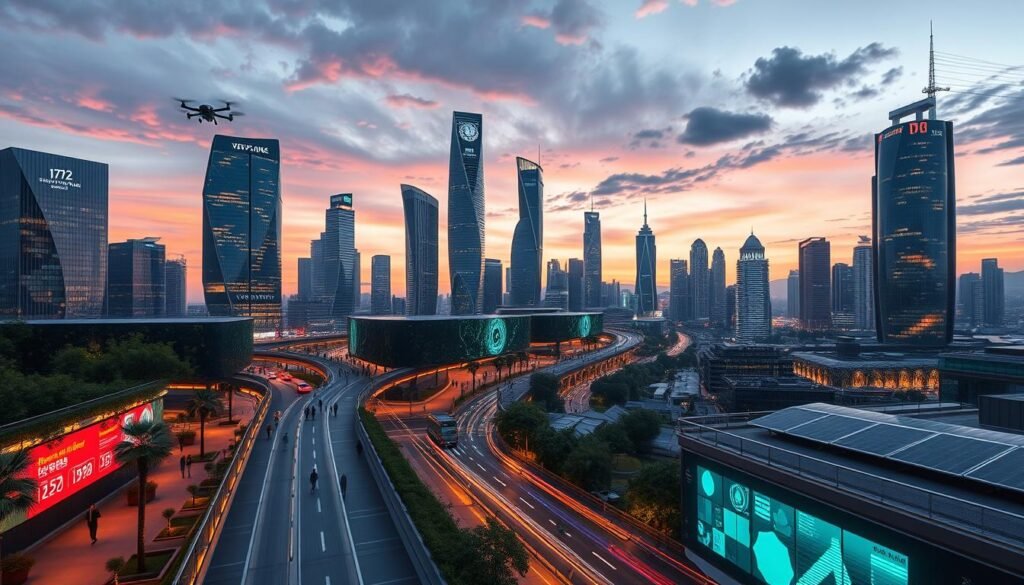
The smart governance area uses digital tech to make admin processes more efficient and open20. As cities adopt smart city projects, the mix of tech and global governance will be more important for sustainable and inclusive growth.
9. International Cooperation on Emerging Technologies
The world is changing fast, with technology at the forefront. The UN’s Summit of the Future in 2024 highlighted the need for better tech and AI rules21. This led to the Global Digital Compact (GDC), the first global plan for digital and AI governance21.
The GDC has 56 actions in a 66-page document. It focuses on good tech governance and AI rules21. It also suggests a global AI fund to help developing countries use AI21.
The Compact wants tech companies to be more open and accountable. It aims to reduce harm from hate speech and unfair algorithms21.
It also pushes for more money to improve internet and digital skills in poor countries. The goal is to teach more people basic digital skills21. It’s important to get more women and girls into STEM fields21.
The GDC also tackles tech-related violence like hate speech and child exploitation21. It asks tech companies to make it easy for users to report problems. This includes kids and people with disabilities21.
Even though the GDC is not a law, it was made with input from thousands of people. This includes big tech companies21. It’s a step towards working together on new tech21.
“The Pact for the Future represents the most wide-ranging international agreement in many years, covering new areas and issues that have not seen agreement for decades.”22
The Pact for the Future is a big deal in global rules22. It talks about peace, development, climate, digital issues, rights, and more22. It has agreements on things like security, disarmament, and space rules22.
AI could add up to USD 15.7 trillion to the world’s economy by 203023. So, working together on new tech is very important. The Pact wants to make sure everyone has internet access and that tech is used right22.
10. Digital Identity Systems and Privacy Concerns
Digital identity systems are becoming more common worldwide. The United Nations’ Digital Compact aims to balance privacy protection with digital benefits24.
Accessibility is a big issue. Over 40% of people over 65 and 25% of those earning less than $30,000 a year lack a smartphone24. It’s important for policies to make sure digital IDs are optional and not used by police without consent24.
A bad digital ID system could lead to privacy issues. It might mean more tracking of personal info24. Experts recommend using modern, decentralized, and privacy-protective technology for digital IDs24.
Different countries have different digital ID systems. Estonia started using digital IDs nearly three decades ago25. The UK is looking at a mix of public and private models for digital IDs25.
It’s important to think about the ethics and risks of digital IDs. Issues like government surveillance, discrimination, and privacy rights need to be addressed26. Policymakers must find a way to make digital IDs empower and protect people in the digital world.

11. Ethical Considerations in Tech-Driven Governance
The world is moving fast towards digital technologies and artificial intelligence (AI) in governance. It’s key to think about the ethics and protect human rights. The Pact for the Future is a big deal. It makes sure new tech respects and protects human rights27 in 24 countries and regions27.
Human Rights in the Digital Age
Technology has changed governance, bringing both good and bad. It can make decisions faster and be more open. But, it also worries about data privacy, bias, and rights issues. The Pact for the Future wants to protect rights defenders and set rules for tech and AI27.
Algorithmic Accountability
AI is key in global decisions now, making accountability important. The Pact for the Future wants strong rules for AI use. It focuses on being open, fair, and accountable27.
It also talks about fixing biases, making AI decisions clear, and blaming those who misuse tech28. The Pact for the Future tackles AI’s legal and ethical sides, like who’s liable for harm and how it affects the environment28. By being ethical in AI, we can use tech to make better decisions and protect rights27.
“Ensuring that digital technologies and AI systems respect human rights is a fundamental pillar of the Pact for the Future. We must be vigilant in upholding these principles to build a more equitable and just global order.”
12. Conclusion
The role of technology in global governance has changed a lot in the digital age. The UN’s Pact for the Future is a big step. It includes the Global Digital Compact and Declaration on Future Generations29.
These plans tackle big issues like AI-generated fake news and the need for strong identity checks. They also focus on balancing tech progress with human rights and sustainable goals29. Success will depend on working together globally, as the US and China both work together and compete in AI30.
We need to keep moving forward with care and ethics in our digital world. By using technology wisely and sticking to our values, we can build a better future. This future will be strong, open, and fair for everyone2930.
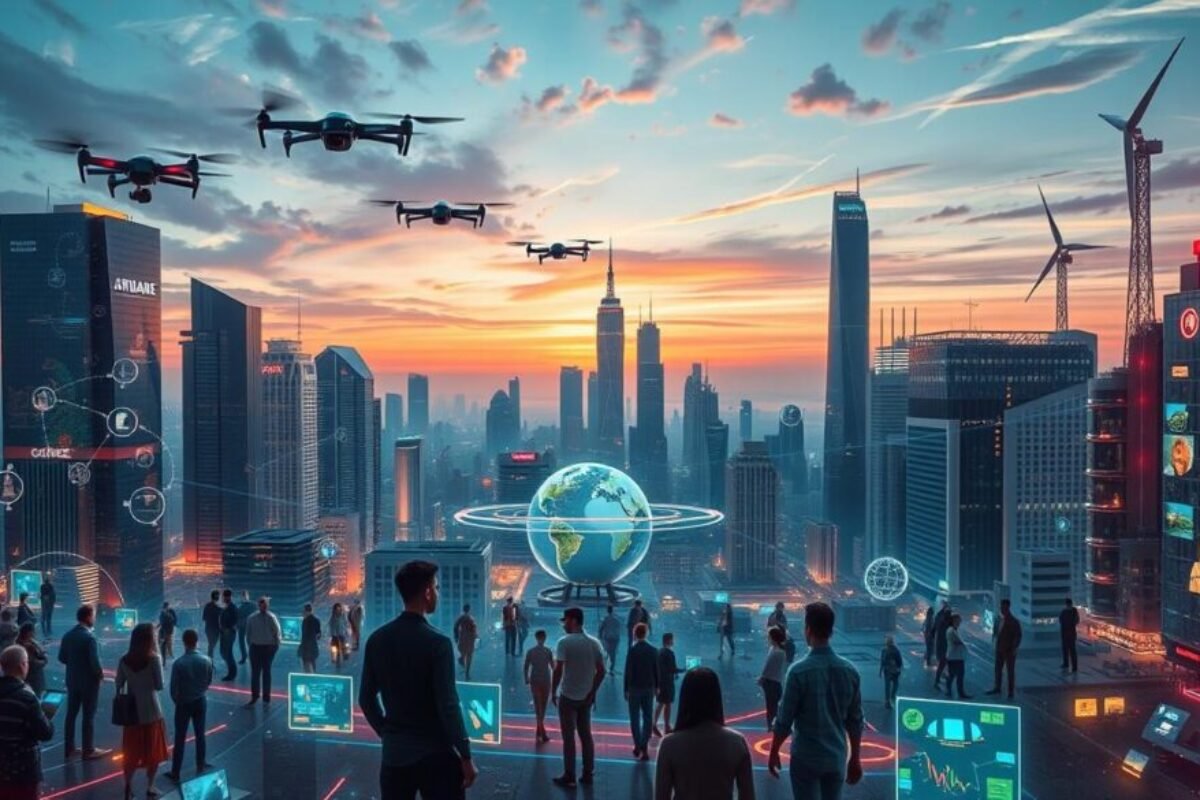
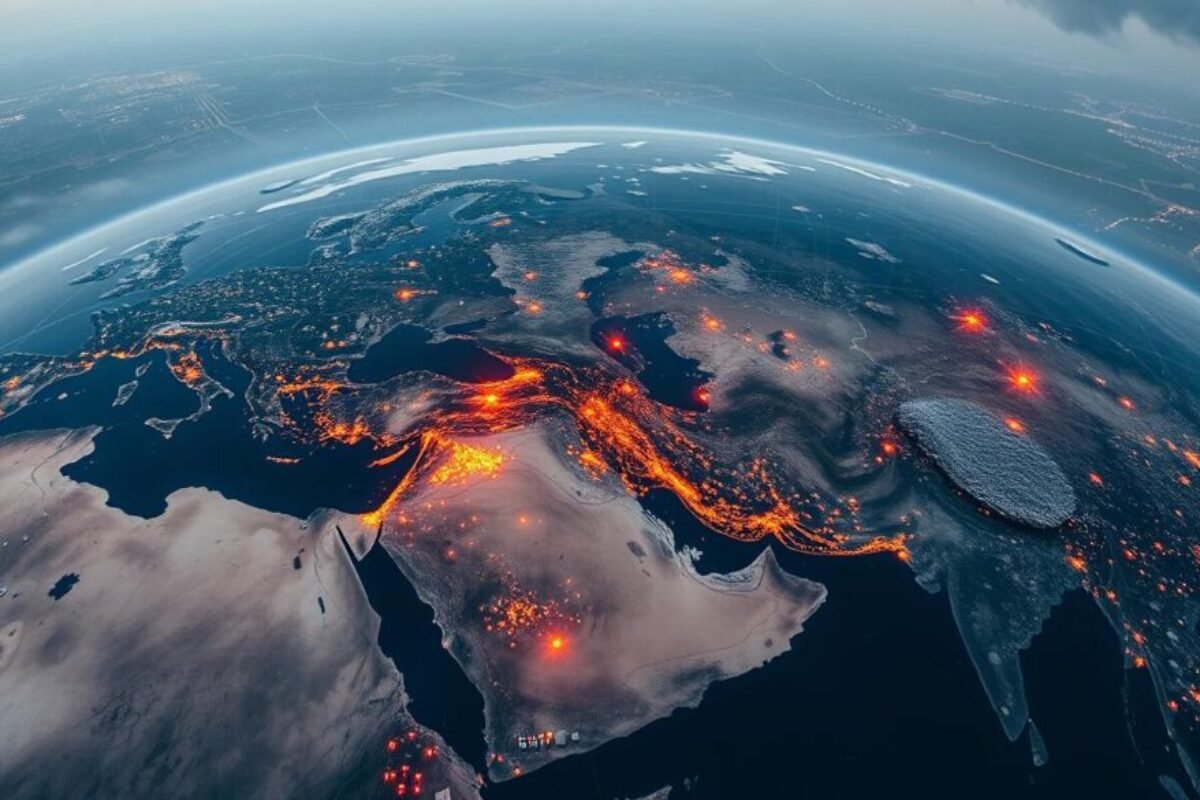

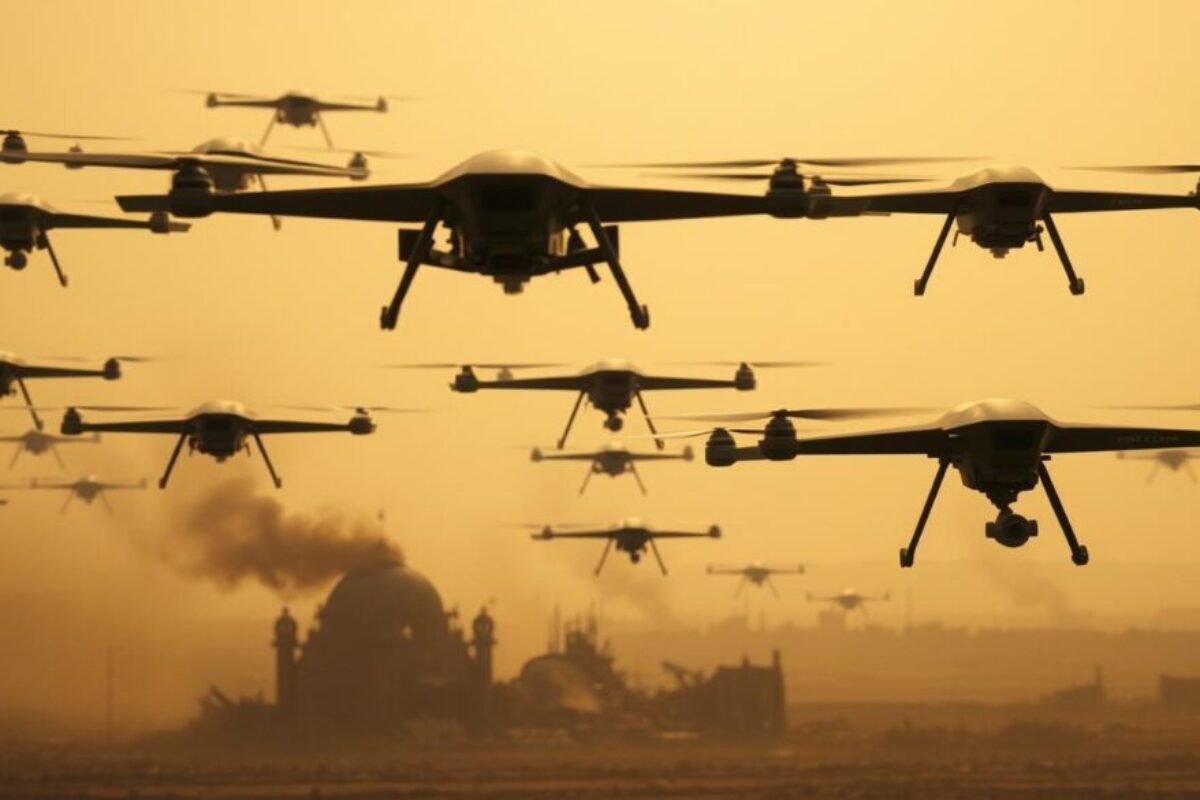

February 24, 2025 @ 9:32 pm
Your point of view caught my eye and was very interesting. Thanks. I have a question for you.
March 9, 2025 @ 6:09 pm
Thanks for sharing. I read many of your blog posts, cool, your blog is very good.
March 12, 2025 @ 11:52 pm
Can you be more specific about the content of your article? After reading it, I still have some doubts. Hope you can help me.
March 13, 2025 @ 5:34 am
Can you be more specific about the content of your article? After reading it, I still have some doubts. Hope you can help me.
March 14, 2025 @ 4:31 pm
Your article helped me a lot, is there any more related content? Thanks!
March 19, 2025 @ 3:05 pm
Your article helped me a lot, is there any more related content? Thanks!
March 19, 2025 @ 10:03 pm
Your point of view caught my eye and was very interesting. Thanks. I have a question for you.
March 26, 2025 @ 1:49 am
I don’t think the title of your article matches the content lol. Just kidding, mainly because I had some doubts after reading the article.
April 11, 2025 @ 8:20 am
Thanks for sharing. I read many of your blog posts, cool, your blog is very good.
May 11, 2025 @ 12:14 am
Your article helped me a lot, is there any more related content? Thanks!
June 13, 2025 @ 9:30 am
Thank you for your sharing. I am worried that I lack creative ideas. It is your article that makes me full of hope. Thank you. But, I have a question, can you help me?
June 29, 2025 @ 10:52 am
Your point of view caught my eye and was very interesting. Thanks. I have a question for you.
July 11, 2025 @ 7:34 pm
Your article helped me a lot, is there any more related content? Thanks!
July 15, 2025 @ 12:44 pm
Can you be more specific about the content of your article? After reading it, I still have some doubts. Hope you can help me.
August 1, 2025 @ 1:32 pm
Reading your article helped me a lot and I agree with you. But I still have some doubts, can you clarify for me? I’ll keep an eye out for your answers.
August 8, 2025 @ 3:04 pm
I don’t think the title of your article matches the content lol. Just kidding, mainly because I had some doubts after reading the article.
August 19, 2025 @ 4:21 pm
Can you be more specific about the content of your article? After reading it, I still have some doubts. Hope you can help me.
August 22, 2025 @ 11:27 am
Thank you for your sharing. I am worried that I lack creative ideas. It is your article that makes me full of hope. Thank you. But, I have a question, can you help me? https://www.binance.com/hu/register?ref=FIHEGIZ8
August 24, 2025 @ 12:05 am
I don’t think the title of your article matches the content lol. Just kidding, mainly because I had some doubts after reading the article. https://www.binance.com/zh-TC/register?ref=VDVEQ78S
September 1, 2025 @ 3:43 am
Your point of view caught my eye and was very interesting. Thanks. I have a question for you. https://www.binance.info/ar-BH/register?ref=V2H9AFPY